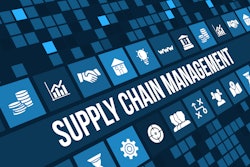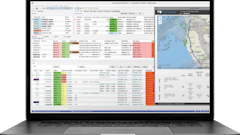
Few industries face the same level of complexity and unpredictability as retail supply chains. The turbulence of the past five years, from pandemic-related shutdowns to Red Sea diversions and shifting trade alliances has made one thing clear: even the most carefully designed supply chains can be destabilized by forces far beyond the control of retailers or logistics providers.
In this environment, visibility has become essential. The ability to see risk, opportunity and performance across the supply chain is no longer a “nice-to-have.” It is the foundation of resilience, enabling businesses to act with agility and turn volatility into differentiation.
Geopolitical conflict reshaping supply chains
Recent analysis from Proxima’s Global Sourcing Risk Index highlights how geopolitical conflict is a defining stressor. Rising war-risk premiums on shipping and insurance, together with sanctions and trade restrictions are driving higher costs and longer lead times. Ongoing diversions around the Red Sea are forcing retailers to plan stock movements earlier than usual, creating extra strain on working capital and reducing flexibility in peak trading windows.
Retailers are no longer just asking where their goods are. They now need visibility into the vulnerabilities attached to those goods, whether that’s exposure to sanctions and tariffs, the security risks of cargo theft, or the financial impact of rising premiums. They also need to understand how those risks might evolve and what alternative sourcing or transportation options exist if disruption occurs.
Geopolitical risk manifests differently across sourcing locations. Mexico’s role as a nearshoring hub for U.S. and European markets brings exposure to cargo theft and cross-border security issues. Turkey, positioned between East and West, faces price volatility, political tension and reputational challenges. Russia continues to present significant legal and operational barriers linked to sanctions. These examples highlight that strategies can no longer be set annually. They must adapt continuously as conditions shift.
Sector vulnerabilities
Not all sectors are equally exposed. Apparel, electronics, furniture, footwear and some food categories are especially vulnerable because they depend on complex global sourcing. These industries span regions such as China, India, Latin America and other markets where political, operational and environmental risks overlap.
Such exposure makes multi-tier visibility critical. Understanding only immediate suppliers is insufficient. Businesses must also have line-of-sight into sub-suppliers, logistics providers and even raw material sources. Without this depth of understanding, they risk being blindsided by bottlenecks and shortages that cascade through the chain.
For example, a factory delay in South Asia might not seem material until the impact filters upstream, slowing fabric supply, constraining garment production and leaving empty shelves in Western retailers during critical trading periods. Visibility makes these interdependencies clear and allows leaders to act before issues materialize downstream.
Strategies for resilience
Multiple strategies are emerging to address these challenges, all hinging on visibility. Multi-sourcing and regionalization help spread exposure across higher and lower-risk geographies. Flexible transportation models, such as balancing ocean and air freight or switching ports dynamically, give retailers options to avoid congestion and manage cost volatility.
At the same time, digitalization and predictive analytics are increasingly critical. Real-time data makes it possible to model disruption scenarios, optimize inventory placement, and track goods across multiple modes of transport. Traceability solutions, once focused narrowly on compliance, are now a core resilience tool, offering transparency into carbon emissions, working conditions and supplier performance. Those who interpret and act on this data fastest can keep shelves stocked and customers satisfied despite volatility.
Beyond risk management
It is tempting to think of visibility purely as a defensive measure - a way of minimizing disruption. Yet its potential is far broader. Greater insight into inventory and demand alignment allows businesses to optimize working capital, avoiding both costly overstocks and damaging shortages. Real-time transparency also strengthens supplier relationships, as data becomes a tool for collaboration rather than a one-way audit.
Visibility can also accelerate progress on sustainability. Tracking emissions, water usage or labor standards across multiple tiers of the supply chain is complex, but increasingly expected by regulators, investors and consumers. Companies that invest in visibility tools can report with confidence, reduce reputational risk, and often identify efficiencies that cut both carbon and cost.
In this sense, visibility is no longer just a matter of compliance or resilience. It is becoming a source of competitive advantage, separating those who can act quickly and strategically from those constrained by opacity.
The road ahead
The coming year will bring further pressure from geopolitical uncertainty, climate volatility and regulatory demands. Elections in major economies, shifts in trade alliances and the acceleration of climate-related disruptions all point towards continued turbulence. Retail supply chains, already stretched, will remain under scrutiny as costs rise and service expectations grow.
In such an environment, resilience cannot be built on redundancy alone. Stockpiling or over-investing in multiple suppliers may buy time, but it is rarely sustainable. The smarter approach lies in leveraging visibility to make better-informed decisions, balancing cost, speed and resilience with agility.
Supply chains are the lifeblood of retail. In an era where uncertainty is the only certainty, visibility has become the most valuable currency they hold. Those who invest in transparency and data-driven insight will not only withstand disruption but will be positioned to thrive in the face of it.

















